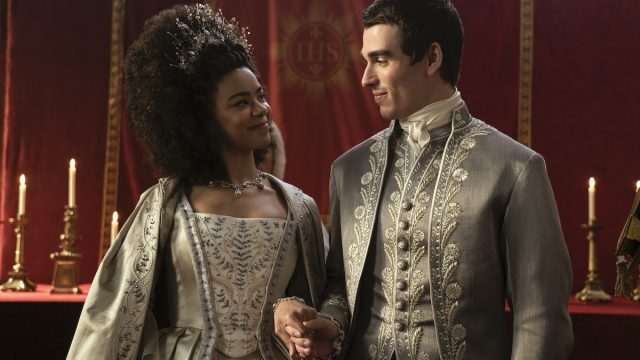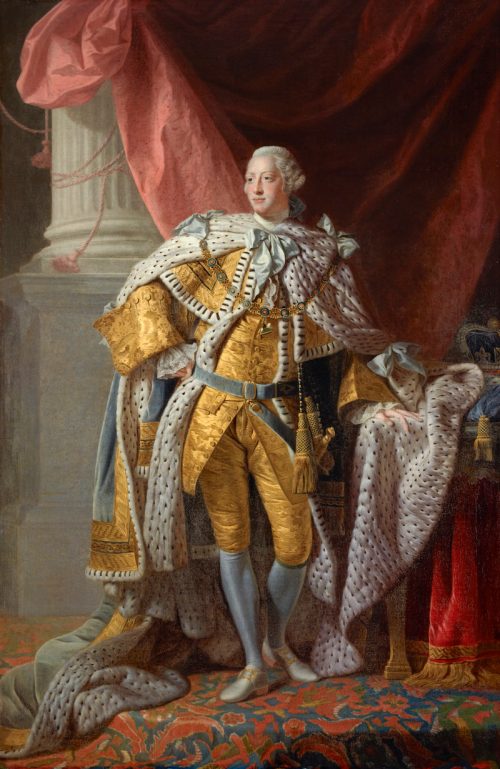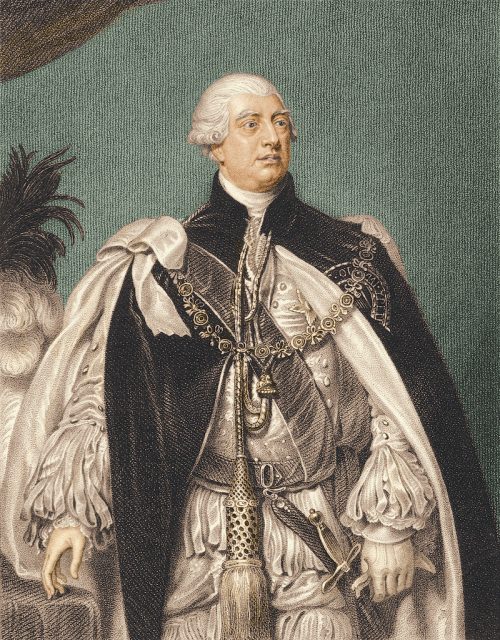What’s Wrong With King George in “Queen Charlotte”? Historians Debate His Diagnosis

If you’re a fan of the Netflix romance series Bridgerton, there’s a good chance you were intrigued by the release of the spinoff show Queen Charlotte: A Bridgerton Story. After all, Queen Charlotte is a character in the primary series, and while she’s usually depicted as a lover of gossip with over-the-top costumes and hairstyles, there’s a mystery about her marriage that Bridgerton doesn’t explore in depth. In Queen Charlotte: A Bridgerton Story, though, viewers get to see what Charlotte’s life was like when she was a young queen and learn about her marriage to King George III, who suffers from a mysterious illness.
Queen Charlotte and King George were real people, of course, and some of the storylines in both shows are rooted in reality. Charlotte and George really did marry in 1761 and welcome 15 children together, for example. But Bridgerton and Queen Charlotte are fictional shows inspired by actual history, as well as some historical rumors. For instance, the character of Charlotte is Black, which references theories that the real Charlotte of Mecklenburg-Strelitz had Black ancestry. This idea, which is based on certain descriptions of her appearance, has been said to lack evidence by many historians, but it makes for another source of tension in the plot of the show.
One aspect of Queen Charlotte that is strongly based in reality is that the real King George was quite ill. The show depicts how misunderstood mental illness was at the time, as George undergoes numerous painful treatments in an attempt to find a cure. Since his death, more research has been done on King George III’s illness, thanks to modern medicine and psychiatry. Read on to find out more about the real monarch, his potential diagnosis, and how it all compares to what viewers saw in Queen Charlotte: A Bridgerton Story.
RELATED: The Most Hated TV Couples of All Time.
What Illness Did King George Have in Queen Charlotte?
How is King George’s illness shown in Bridgerton?
King George (James Fleet) only appears in Bridgerton a few times, but it is clear that he is suffering from some sort of mental illness and kept away from the rest of the royal court aside from visits with his wife, Charlotte (Golda Rosheuvel). But in Queen Charlotte: A Bridgerton Story, a lot more is revealed about the character.
In the prequel series, young King George (Corey Mylchreest) initially does not want to spend much time with his new wife, Charlotte (India Amarteifio). It’s eventually revealed that this is because he experiences unpredictable disassociations from reality. He becomes obsessed with astrology, scribbles on the walls of their palace, runs outside naked in the middle of the night, and is not always able to have coherent conversations with others.
King George receives treatments that are basically forms of torture from an aggressive and strict doctor, John Monro (Guy Henry). The bond between George and Charlotte strengthens as she learns the truth about his health struggles.
What illness did King George have?

In real life, King George III became known as “Mad King George,” as his illness was not understood during his lifetime. Today, there is still not a definitive answer as to what exactly he suffered from. As reported by PBS, in the 1960s, two psychiatrists determined based on their research that George had porphyria, which affects the body’s ability to produce hemoglobin.
PBS explains that, more recently, researchers from St George’s, University of London determined that he suffered from a severe mental illness rather than porphyria, however. Furthermore, research based on George’s letters and the way they were written suggests that he may have had bipolar disorder. According to the Mayo Clinic, bipolar disorder is “a mental health condition that causes extreme mood swings that include emotional highs (mania or hypomania) and lows (depression).”
On top of this, a 2005 study of George’s hair found high levels of arsenic. This could have been from medication he was given to treat his illness, but it may have made his illness worse instead.
What is porphyria?

Since porphyria is the diagnosis often attributed to King George, let’s take a closer look. According to Mayo Clinic, porphyria “refers to a group of rare disorders that result from a buildup of natural chemicals called porphyrins in the body. Porphyrins are needed to make heme, a part of hemoglobin. Hemoglobin is a protein in red blood cells. It carries oxygen to the body’s organs and tissues.” Porphyrins can build up in the body if one does not have enough of the eight enzymes needed to change them into heme.
There are two types of porphyrias: acute porphyrias can affect the nervous system and cutaneous porphyrias primarily affect the skin. Because the symptoms of acute porphyrias can include mental health issues, it seems more likely that this is the type George III could have had. People with acute porphyrias can suffer from severe pain, digestive problems, breathing problems, and high blood pressure, as well as “mental changes, such as anxiety, hallucinations or mental confusion” and seizures.
RELATED: The Saddest TV Episodes of All Time.
What treatment did King George get?

The Dr. John Monro featured in Queen Charlotte: A Bridgerton Story was a real person. According to the Los Angeles Times, he ran Bethlem Royal Hospital, which was known as “Bedlam” due to its conditions, and he did actually treat King George.
Andrew Roberts, who wrote the book The Last King of America: The Misunderstood Reign of King George III, told the Los Angeles Times that George “was tortured, essentially.” Treatments included bloodletting, blistering of the skin, leeches, and putting the king in a straitjacket for days at a time.
“That was what you did with mentally ill people in those days, and it was exactly the worst thing to do,” Roberts said. The author added that there was also a reason for doctors keep the king in pain. “They were being paid three times the amounts that you got for a normal consultation fee,” he explained.
George was later treated by a different doctor, Francis Willis, who used more modern methods and was able to provide George with some level of relief, Roberts said.
How would King George be treated today?

How George would be treated medically today depends on his diagnosis. If he really did have prophyria, the treatment would include medicine, such as injections of hemin (a medicine form of heme); receiving fluid that contains glucose; and potentially staying in the hospital to treat other symptoms. He would also be advised to avoid triggering symptoms, which can happen due to medicines, heavy alcohol consumption, smoking, and emotional stress, according to the Mayo Clinic.
If George was diagnosed with bipolar disorder instead, treatment could include medication, such as mood stabilizers, antipsychotics, and antidepressants; counseling; and hospitalization.
RELATED: Meghan Was “Insulted” After Queen Offered Her a Black Royal Assistant, New Book Says.
How did George’s reign play out?

According to the British royal family website, “The Regency Bill of 1765 stated that if The King should become permanently unable to rule, Charlotte would become Regent,” meaning she’d rule on behalf of her husband. But, when it appeared that this could end up being the case, there was a dispute between Charlotte and her and George’s oldest son, who would later become King George IV. Eventually, a new bill meant that “after the onset of George III’s permanent madness in 1811, The Prince of Wales became Regent, but Charlotte remained her husband’s guardian until her death in 1818.”
George III died two years later in 1820 at the age of 81. George VI ruled until his own death in 1830.
For more celebrity news delivered right to your inbox, sign up for our daily newsletter.